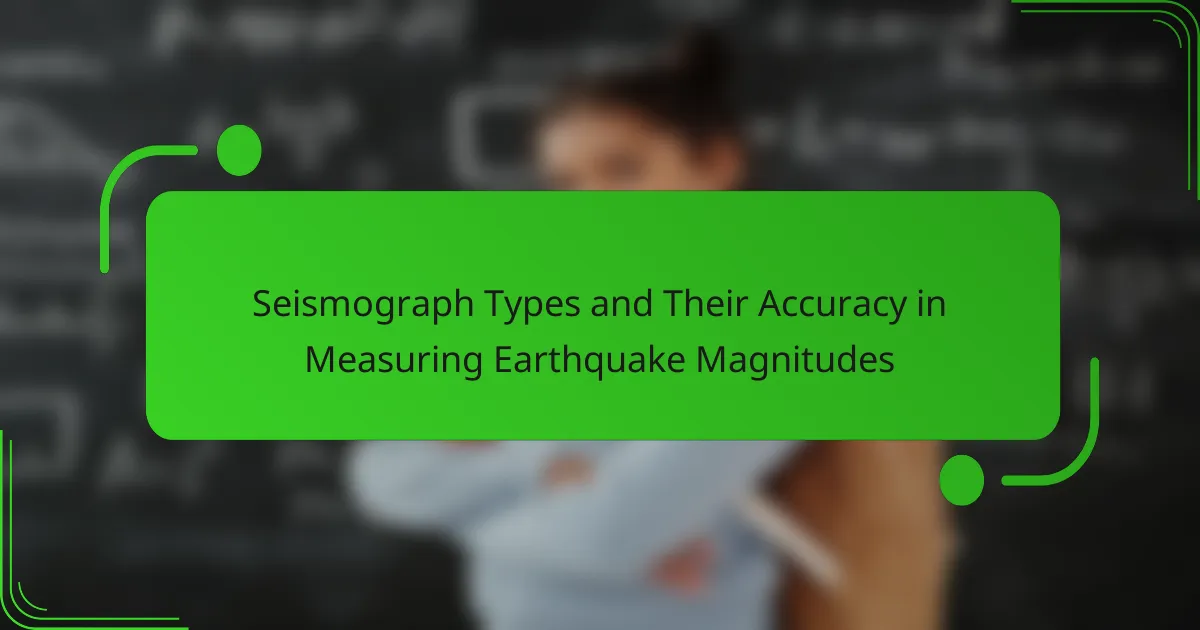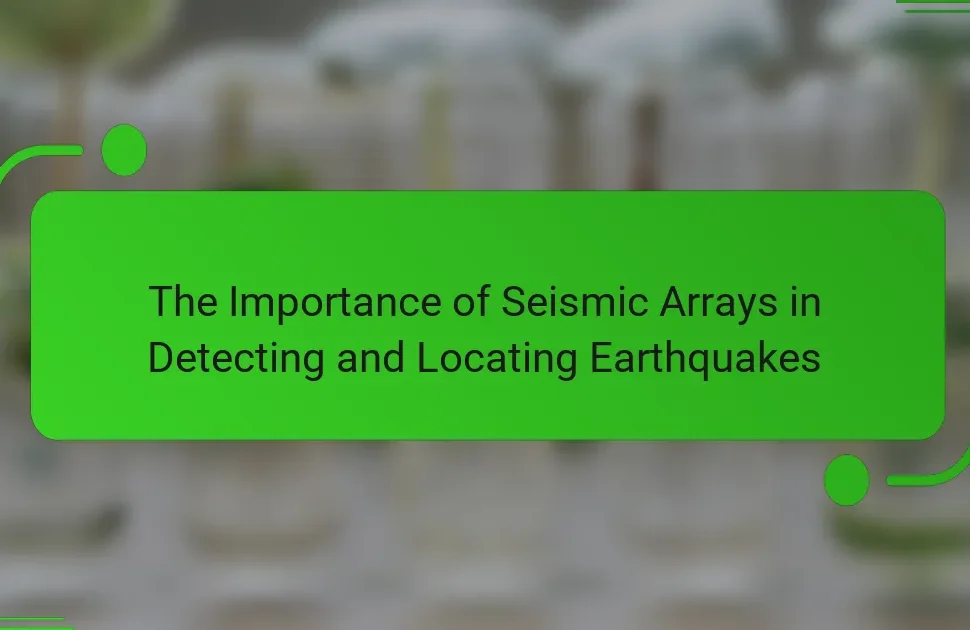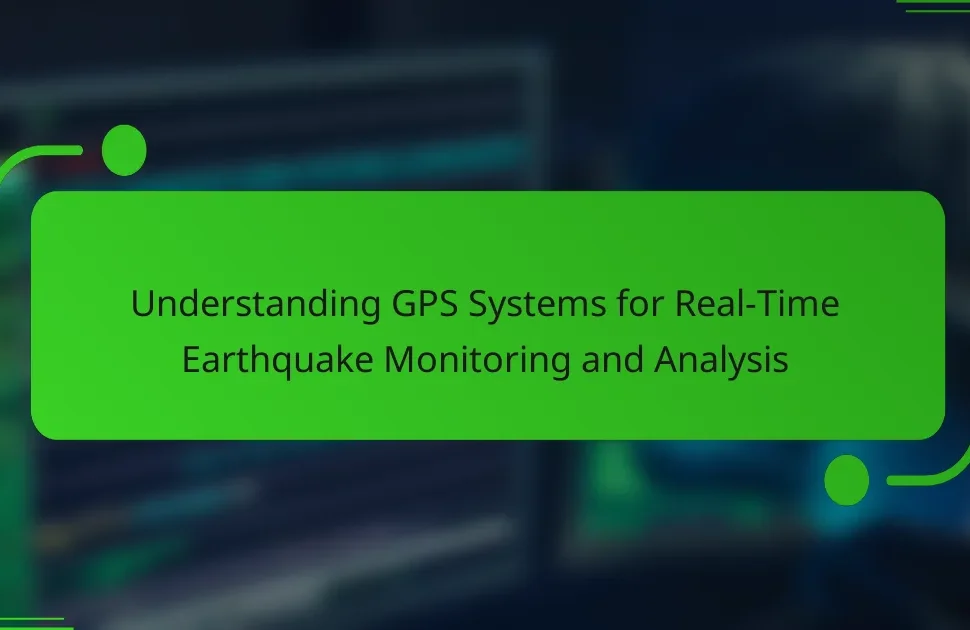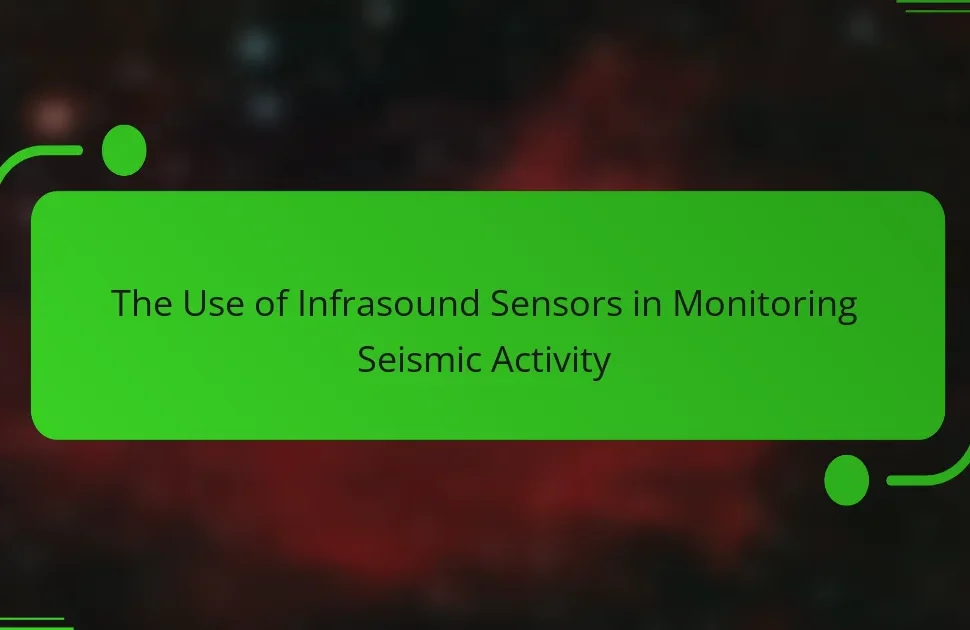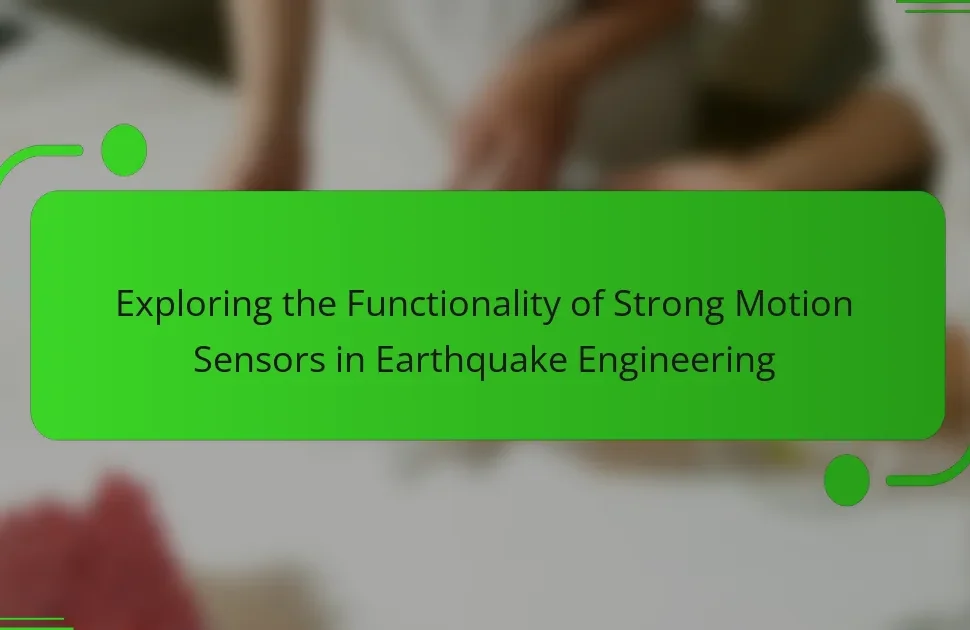Seismographs are specialized instruments used to measure and record ground motion during seismic events, such as earthquakes. They detect vibrations caused by seismic waves, with various designs impacting their sensitivity and frequency range. This article explores different types of seismographs, their role in determining earthquake magnitudes, and the importance of integrating data from multiple seismograph types for accurate measurements. It also outlines best practices for calibration, maintenance, and data processing techniques to enhance measurement reliability. Understanding these elements is crucial for effective seismic hazard assessments and emergency response planning.
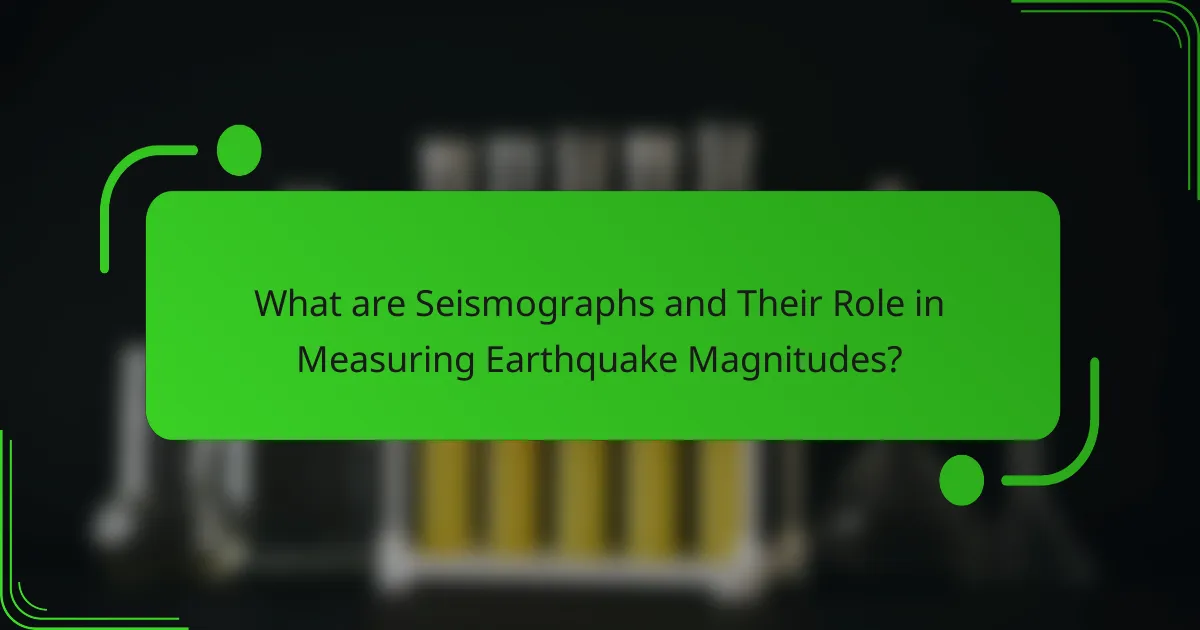
What are Seismographs and Their Role in Measuring Earthquake Magnitudes?
Seismographs are instruments that measure and record the motion of the ground during seismic events, such as earthquakes. They detect vibrations and movements caused by seismic waves. Seismographs consist of a mass suspended on a spring, which remains stationary while the ground moves. This relative motion is recorded on a rotating drum or digital sensor. The data collected helps determine the earthquake’s magnitude and location. The Richter scale, for example, utilizes seismograph data to quantify earthquake strength. Accurate measurements are essential for assessing potential damage and informing emergency responses. Seismographs play a critical role in earthquake research and monitoring systems worldwide.
How do seismographs detect and record seismic waves?
Seismographs detect and record seismic waves by utilizing a mass suspended on a spring. When seismic waves travel through the Earth, they cause the ground to shake. This shaking moves the base of the seismograph while the mass remains relatively stationary due to inertia. The relative motion between the mass and the base is recorded on a rotating drum or digital sensor. The resulting trace is called a seismogram, which displays the amplitude and frequency of the seismic waves. Seismographs can differentiate between types of seismic waves, such as P-waves and S-waves, based on their speed and movement patterns. This ability to capture and analyze seismic activity is essential for understanding earthquakes and their magnitudes.
What types of seismic waves do seismographs measure?
Seismographs measure two primary types of seismic waves: P-waves and S-waves. P-waves, or primary waves, are compressional waves that travel fastest through the Earth. They can move through solids, liquids, and gases. S-waves, or secondary waves, follow P-waves and are shear waves that only travel through solids. Seismographs detect these waves by recording their amplitude and frequency. The distinction between P-waves and S-waves is crucial for determining the location and magnitude of an earthquake.
What is the process of converting seismic signals into data?
The process of converting seismic signals into data involves several key steps. First, seismic waves are detected by sensors, often referred to as seismometers. These sensors capture ground motion caused by seismic events. The detected signals are then amplified to enhance their clarity. Next, the amplified signals are digitized, converting analog waveforms into digital data. This digital data is processed using algorithms to filter noise and extract meaningful information. Finally, the processed data is analyzed to determine the earthquake’s magnitude, depth, and location. This systematic approach ensures accurate representation of seismic events for further study and monitoring.
What are the different types of seismographs?
There are several types of seismographs used to measure seismic activity. The primary types include analog seismographs, digital seismographs, and strong-motion seismographs. Analog seismographs use mechanical components to record ground motion on paper. Digital seismographs convert ground motion into digital signals for analysis. Strong-motion seismographs are specifically designed to record high-frequency ground movements during significant earthquakes. Each type serves a unique purpose in seismology. Their design influences the accuracy and detail of the seismic data collected.
What is the difference between analog and digital seismographs?
Analog seismographs record seismic waves using mechanical components and paper. They produce continuous waveforms that represent ground motion. Digital seismographs, on the other hand, convert seismic signals into digital data. They provide discrete readings that can be easily analyzed and stored.
Analog devices are often less sensitive and have limitations in data precision. Digital seismographs can capture a wider frequency range and offer higher accuracy. The transition from analog to digital technology has improved the detection of smaller seismic events. Digital systems also facilitate real-time data transmission and advanced processing techniques.
How do strong-motion and broadband seismographs differ in functionality?
Strong-motion seismographs and broadband seismographs differ in functionality primarily based on their design and purpose. Strong-motion seismographs are specifically engineered to record high-amplitude seismic waves during strong earthquakes. They capture rapid ground motion with high sensitivity and a short response time. This allows them to provide detailed information about the shaking intensity and duration.
In contrast, broadband seismographs are designed to detect a wider range of seismic frequencies. They can record both low-frequency waves from distant earthquakes and high-frequency waves from nearby events. This broad frequency response allows them to capture a comprehensive view of seismic activity over longer periods.
The differences in functionality are crucial for various applications. Strong-motion seismographs are essential for engineering and safety assessments in earthquake-prone areas. Broadband seismographs are vital for research, allowing scientists to study seismic waves and improve earthquake models. Both types play distinct roles in advancing our understanding of seismic events and enhancing public safety.
What factors influence the accuracy of seismographs in measuring earthquake magnitudes?
The accuracy of seismographs in measuring earthquake magnitudes is influenced by several factors. These factors include the type of seismograph used, the calibration of the instrument, and the location of the seismograph. Different seismograph types, such as broadband or strong-motion seismographs, have varying sensitivity levels. Proper calibration ensures that the instrument provides precise readings. The geographic location affects the seismic waves’ transmission and can introduce noise or interference. Additionally, the depth and magnitude of the earthquake impact the seismograph’s ability to record accurate data. Research indicates that seismographs in optimal locations yield more reliable measurements, enhancing overall accuracy.
How does the calibration of a seismograph affect its accuracy?
Calibration of a seismograph directly impacts its accuracy. Proper calibration ensures that the instrument accurately measures ground motion. It adjusts the sensitivity and response characteristics of the seismograph. This process allows for precise detection of seismic waves. Inaccurate calibration can lead to erroneous readings. For instance, a poorly calibrated seismograph may underestimate or overestimate earthquake magnitudes. Studies show that calibration errors can result in a 20% variance in recorded magnitudes. Therefore, regular calibration is essential for reliable seismic data.
What role does the location of a seismograph play in its measurement precision?
The location of a seismograph is crucial for its measurement precision. Seismographs placed near tectonic plate boundaries detect seismic waves more accurately. They capture higher frequency waves, which are essential for precise readings. Conversely, seismographs located far from these boundaries may miss critical data. Environmental factors, such as urban noise or geological features, also affect readings. For example, a seismograph in a quiet area will yield clearer data than one in a noisy city. Additionally, local geological conditions can amplify or attenuate seismic signals. This variability impacts the overall accuracy of earthquake magnitude measurements. Thus, optimal placement enhances the reliability of seismic data.
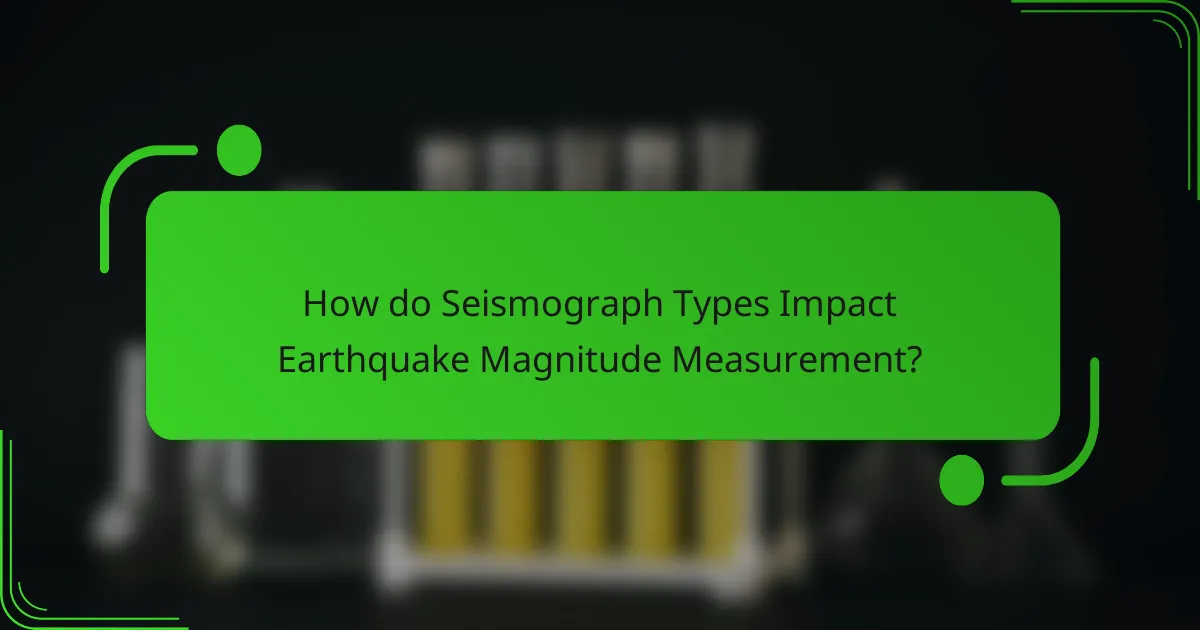
How do Seismograph Types Impact Earthquake Magnitude Measurement?
Seismograph types significantly impact earthquake magnitude measurement. Different seismograph designs capture seismic waves with varying sensitivity and frequency ranges. For instance, broadband seismographs detect a wide spectrum of frequencies, enhancing the accuracy of magnitude calculations. In contrast, short-period seismographs focus on high-frequency waves, which may not provide a complete picture of larger quakes.
The choice of seismograph affects the calculated magnitude due to their response characteristics. Broadband instruments can measure distant earthquakes effectively, while short-period devices excel in local events. Studies indicate that using multiple seismograph types can improve overall measurement reliability.
Research by the United States Geological Survey (USGS) highlights that integrating data from various seismograph types yields more precise magnitude estimates. This integration is crucial for accurate seismic hazard assessments and early warning systems.
What are the advantages and disadvantages of each seismograph type?
Seismographs can be categorized into three main types: analog, digital, and strong-motion. Each type has distinct advantages and disadvantages.
Analog seismographs are known for their simplicity and reliability. They provide continuous records of seismic waves. However, they lack precision in measuring small earthquakes and require manual data interpretation.
Digital seismographs offer enhanced accuracy and data storage capabilities. They can automatically process and analyze seismic signals. On the downside, they can be more expensive and require technical expertise for maintenance.
Strong-motion seismographs are designed to measure intense ground shaking during earthquakes. They provide critical data for engineering and safety assessments. However, they are limited in range and may not capture smaller seismic events effectively.
How do strong-motion seismographs enhance earthquake magnitude readings?
Strong-motion seismographs enhance earthquake magnitude readings by providing detailed measurements of ground motion during seismic events. These instruments capture high-frequency vibrations that occur during an earthquake. This data allows for a more accurate assessment of the earthquake’s intensity and impact. Strong-motion seismographs are particularly effective in measuring the peak ground acceleration (PGA). The PGA is a critical factor in determining the earthquake’s magnitude. Studies show that strong-motion data can improve magnitude estimates by up to 20%. This improvement is significant for engineering and safety assessments in earthquake-prone areas.
What limitations do broadband seismographs face in certain conditions?
Broadband seismographs face limitations in detecting low-frequency signals in noisy environments. High levels of ambient noise can obscure seismic signals, particularly in urban areas. Additionally, these instruments may struggle to accurately record seismic events during extreme weather conditions. Heavy rain or wind can introduce vibrations that interfere with measurements. Calibration issues can also arise, affecting data accuracy. Furthermore, broadband seismographs may have reduced sensitivity at very high frequencies. This limitation impacts their ability to capture detailed seismic waveforms. Thus, while broadband seismographs are effective in many scenarios, their performance can be compromised under specific conditions.
How do environmental factors affect seismograph accuracy?
Environmental factors can significantly affect seismograph accuracy. Factors such as temperature, humidity, and soil conditions influence the performance of seismographs. For instance, temperature fluctuations can alter the sensitivity of the equipment. High humidity can lead to condensation, impacting electrical components. Soil conditions, like moisture content and composition, affect ground vibrations. A study published in the Journal of Geophysical Research highlighted that seismic waves are altered by varying soil types, leading to discrepancies in readings. These environmental influences can result in either underestimating or overestimating seismic activity.
What impact do geological conditions have on seismograph readings?
Geological conditions significantly impact seismograph readings. These conditions include soil composition, rock type, and geological structures. Different materials affect seismic wave propagation speed and amplitude. For instance, seismic waves travel faster through solid rock than through loose soil. Consequently, readings can vary based on the local geological context. Areas with softer soils may amplify seismic waves, leading to higher recorded magnitudes. In contrast, hard rock environments may dampen the waves, resulting in lower readings. Studies show that discrepancies in readings can reach up to 20% based on geological variations. This highlights the importance of local geology in accurately interpreting seismograph data.
How does weather influence the performance of seismographs?
Weather can significantly influence the performance of seismographs. Changes in temperature and humidity can affect the materials used in seismograph construction. For example, thermal expansion can cause misalignment in sensitive components. High humidity may lead to condensation, potentially damaging electronic parts. Wind can create vibrations that interfere with accurate readings. Rain can affect the ground’s stability, altering seismic wave propagation. Additionally, atmospheric pressure variations can influence the detection of low-frequency seismic signals. These factors collectively impact the reliability and accuracy of seismographic measurements.
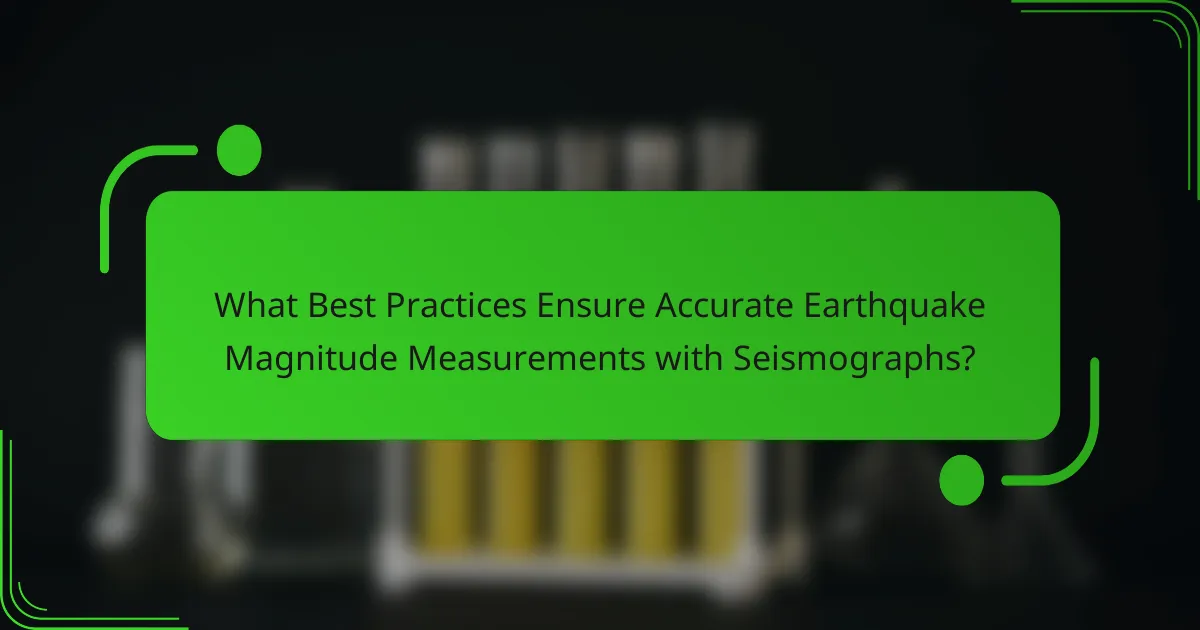
What Best Practices Ensure Accurate Earthquake Magnitude Measurements with Seismographs?
Best practices for accurate earthquake magnitude measurements with seismographs include proper calibration, regular maintenance, and using appropriate data processing techniques. Calibration ensures that the seismograph accurately captures ground motion. Regular maintenance prevents equipment malfunctions that could distort measurements. Employing advanced data processing techniques enhances the clarity and reliability of the recorded signals. Utilizing multiple seismographs in a network improves data accuracy through triangulation. Following the guidelines set by the International Association of Seismology and Physics of the Earth’s Interior (IASPEI) ensures adherence to standardized measurement practices. These practices collectively result in more precise earthquake magnitude assessments.
How can seismograph installation be optimized for better accuracy?
Seismograph installation can be optimized for better accuracy by ensuring proper site selection. Choosing locations with minimal vibrations from human activity enhances data quality. Additionally, burying the seismograph in a stable environment reduces noise interference. Regular calibration of the equipment maintains precise measurements. Employing multiple seismographs in a network provides triangulation for improved data reliability. The US Geological Survey states that these practices significantly enhance the accuracy of seismic readings.
What maintenance practices are essential for seismograph reliability?
Regular calibration is essential for seismograph reliability. Calibration ensures that the instrument accurately measures seismic waves. Routine checks help identify any discrepancies in measurements. Regular cleaning prevents dust and debris from affecting sensor performance. Environmental monitoring protects the equipment from extreme temperatures and humidity. Software updates enhance data processing capabilities and accuracy. Documentation of maintenance activities allows for tracking performance over time. These practices collectively ensure that seismographs provide reliable data for earthquake analysis.
What are common troubleshooting tips for seismograph users?
Common troubleshooting tips for seismograph users include checking power supply connections. Ensure the device is receiving adequate power. Inspect the sensor for proper placement and stability. Misalignment can lead to inaccurate readings. Verify the calibration of the seismograph regularly. Calibration ensures accurate measurements of seismic activity. Monitor data output for anomalies. Unusual patterns may indicate sensor issues. Replace any damaged cables or connectors promptly. Faulty connections can disrupt data transmission. Consult the user manual for specific error codes. Manuals provide guidance for resolving common issues.
Seismographs are specialized instruments used to measure and record ground motion during seismic events, such as earthquakes. This article provides an in-depth examination of different types of seismographs, including analog, digital, and strong-motion devices, and their varying functionalities in measuring earthquake magnitudes. Key factors influencing the accuracy of these instruments, such as calibration, location, and environmental conditions, are discussed alongside best practices for ensuring reliable measurements. The article emphasizes the importance of integrating multiple seismograph types for enhanced data accuracy and effective earthquake monitoring.
